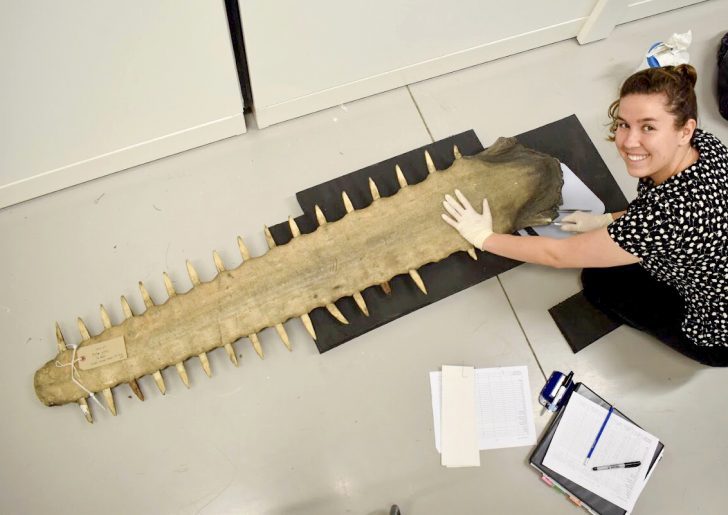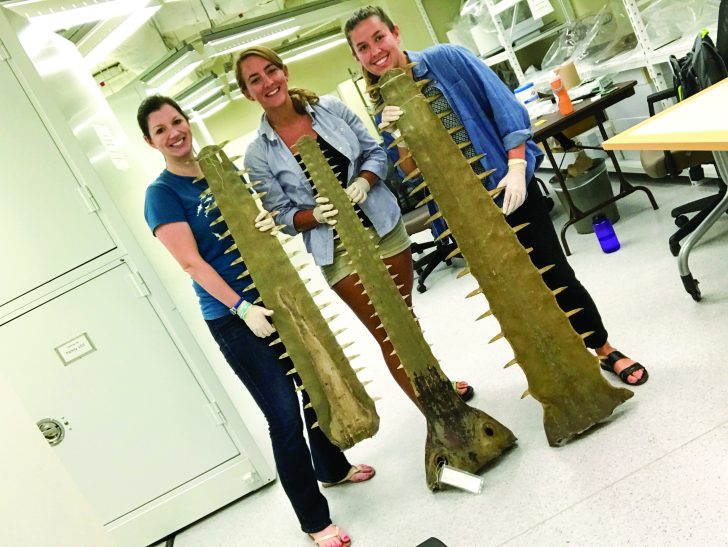by Tonya Wiley, Havenworth Coastal Conservation
See A Saw? Antique Sawfish Rostra Yield Valuable DNA and Aid Scientists

The long-term recovery of sawfishes is dependent upon populations being large and genetically diverse enough to adapt to changes in the environment, resist disease, and avoid inbreeding. If the levels of genetic diversity in contemporary populations are similar to those observed in historic sawfish populations, then the survival outlook for these animals may be good and recovery plans can focus on habitat restoration and protection. However, if the levels of genetic diversity in contemporary sawfish populations are substantially lower when compared to historic populations, then protecting the remaining genetic diversity should be a high priority for conservation and management plans.
Sawfish rostra are considered unique ‘trophies’ so many have been retained in both public and private collections. (Note: Antique rostra were collected prior to sawfish being listed under the Endangered Species Act. Now all sawfish species are protected in the United States and the removal or sale of sawfish rostra is illegal.) Sawfish saws are often preserved dry, so viable DNA is still present even in a 200-year-old rostrum.
To understand the historic population, it is important to collect samples from as many old saws from as many places as possible. And that is how you can help! Do you own a sawfish rostrum and are willing to contribute a sample for science? Or have you seen a saw in a museum, restaurant, tackle shop, marina, antique store, or friend’s house? If so, please call 1-844-4-SAWFISH or email n.phillips@usm.edu.
For more information on the project visit https://saveourseas.com/project/sawfish-gene-pool/
(Samples are collected under authority and guidelines of Endangered Species Act permits)

